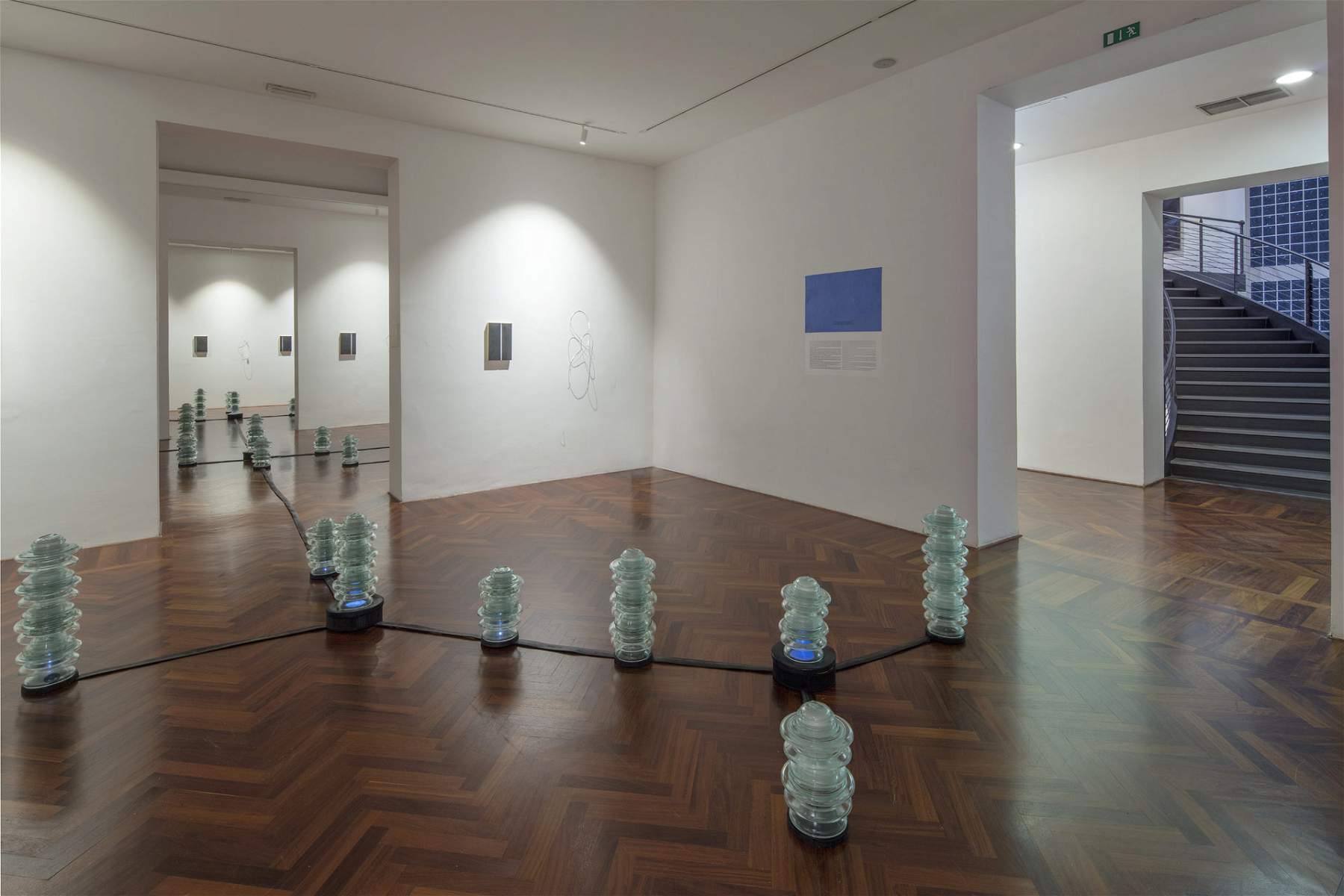Bacteria and planets, Michelangelo Penso's Infinite Dimensions on display in La Spezia
From Nov. 30, 2019 to March 22, 2020, CAMeC in La Spezia will host the solo exhibition by Michelangelo Penso (Venice, 1964) titled Infinite Dimensions. Curated by Leo Lecci and realized in collaboration with the University of Genoa - Department of Italianistics, Romance, Antiquity, Arts and Performing Arts (DIRAAS) and Archives of Contemporary Art (AdAC), the exhibition, which has never been shown before, offers the La Spezia public three large installations accompanied by wall works that testify to the complex creative process behind them.
The first installation one encounters is Cronòtopo, conceived in early 2019 and presented in La Spezia in a new arrangement: it is a floor installation that recreates (through an algorithm) the arrangement of the planets of the solar system and reproduces the frequencies generated by them by activating sounds as visitors pass by. The others are Pelagibacter and Roseobacter, both from 2019: these are site-specific installations, created specifically for the exhibition, and inspired by the two marine bacteria from which they are named. Pelagibacter, isolated in 2002, is a bacterium that lives in waters (both fresh and salt), is responsible for the formation of much of the plankton that gives nourishment to many marine animals, and is therefore an important player in the aquatic ecosystem. Roseobacter, first described in 1991, is also a much-studied marine bacterium as it has been found to be able to degrade hydrocarbon components thus limiting pollution of the sea. The two bacteria are reproduced at a 20,000,000:1 scale with two large structures formed by suspended belts. The exhibition is completed by the display of some Carnets, notebooks of a futuristic universe populated by gigantic molecular structures that are superimposed on pages of old guidebooks.
The exhibition aims to give evidence and plastic form to two infinite dimensions, that of the infinitely large and that of the infinitely small by confronting man with the problem of his presence and role in the universe. The review also resumes CAMeC’s program dedicated to the reception, reporting and study of the main artistic expressions of the present.
“Scientific research,” writes curator Leo Lecci, “constitutes for Michelangelo Penso a fundamental field of investigation from which to conceive, design and create different works (drawings, paintings, sculptures and installations) that have the title and structure of mathematical or biological formulas or, more generally, scientific ones. The world that the artist represents is that of the invisible, the infinitely small, genetics, microbiology, DNA molecules: a world reinterpreted, interpreted and transposed into a specific and proper object dimension [...]. Through scientific investigation, the Venetian artist creates independent sculptures endowed with a life of their own, made of industrial materials that intrinsically characterize them; forms created to mark space, conceived in plastic terms to dialogue with the surrounding environment: ultimately, Penso’s work does not reflect a style as much as an attitude, a challenge to our expectations and to the very concept of artistic creation. Also because through the experience of the work Penso does not intend to disorient the viewer, but rather to stimulate his active participation: the structures with which he is confronted propose an entirely different world, an unknown universe, a completely new aesthetic.”
Michelangelo Penso, a graduate of the Accademia di Belle Arti in Venice, was a student of Emilio Vedova, recently the protagonist of an exhibition at CAMeC focused on his graphic production: the student thus finds himself exhibiting in the same spaces as the master. Penso’s work, which starts from an interest in unknown worlds and mathematical and biological studies, is closely linked to the impact that scientific discoveries have and will have on our existence: as part of his research, the artist, strongly attracted to the world of microorganisms, genetics and astronomy, has developed a sculptural language that uses materials of industrial origin and operates in a space between art and science. Since 1981, his installations have been exhibited in many private and institutional spaces, including MACRO in Rome (2019), the Reggia di Caserta (2018), and the Musei Civici di Bassano (2018). Other major exhibitions include participation in the XLV International Art Exhibition of the Venice Biennale (1993), and exhibitions such as Exposition au Palais de Tokyo (Paris, 2016), Nutrimentum (Galleria d’Modern Art Achille Forti, Verona, 2015), RSBP Genetic Circuit (Palazzo Fortuny, Venice, Italy, 2011), Nuit Blanche-Dazibao d’images, installation for Pierre et Marie Curie University (France, 2004), Cardinal Points of Art (Venice, 1993).
The exhibition can be visited during CAMeC’s opening hours: Tuesday through Sunday from 11 a.m. to 6 p.m. Closed Mondays, Christmas, New Year’s Day. Tickets: full 5 euros, reduced 4 euros, special reduced 3.50 euros. Catalog curated by Andrea Daffra. For info visit the CAMeC website.
Image: Michelangelo Penso, Chronotype (2019; installation view, CAMeC, La Spezia). Photograph by Enrico Amici.
 |
| Bacteria and planets, Michelangelo Penso's Infinite Dimensions on display in La Spezia |
Warning: the translation into English of the original Italian article was created using automatic tools. We undertake to review all articles, but we do not guarantee the total absence of inaccuracies in the translation due to the program. You can find the original by clicking on the ITA button. If you find any mistake,please contact us.





























